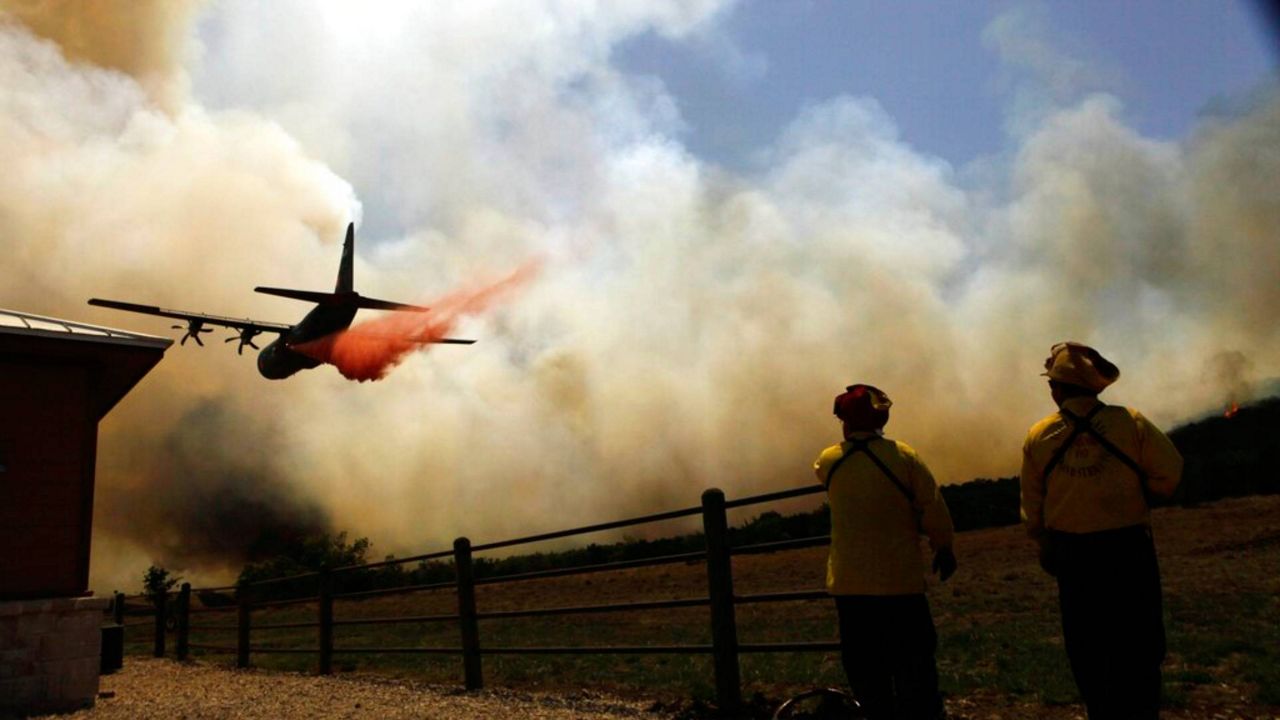One of the best ways to prevent wildfires — such as the one that destroyed 1,660 homes in Bastrop County in 2011 — would be to significantly boost the use of prescribed controlled burns.
Launching a controlled burn is fairly easy for a state agency or local county but much harder for private landowners, who can’t find insurance policies to cover liability. That’s why Lt. Gov. Dan Patrick added wildfires and prescribed controlled burns to the Texas Senate’s interim charges.
Justin Penick chairs the Prescribed Burn Board at the Texas Department of Agriculture. He’s also a licensed, certified, insured prescribed burn manager in the state. Penick said the key question the board wrestles with is how to get more private landowners involved in controlled, or prescribed, burns on their property.
“Sixty percent is being burned on 5% of our land, and that 5% is public land managed by (Texas) Parks & Wildlife, Texas Forest Service and the federal government,” Penick told the Senate Committee on Natural Resources and Economic Development on Monday. “On the private side, we have to empower private landowners to burn more, whether that be through hiring contractors, whether that be individually and on their own.”
Prescribed burns are one of the most effective tools in containing potential forest fires because it reduces those fuels that a wildfire would otherwise be likely to consume. The Bastrop Complex fire — which used the Lost Pines Forest as kindling — was caused by power lines and burned for 37 days, destroying over 32,400 acres, according to the Texas Forest Service.
Anyone who doubts the danger of a lack of prescribed burning needs only look at California.
“We watch the news, and we see what happens there,” Penick said. “Versus, take the State of Florida, on the other end of the country. They have population densities that are almost exactly the same as California. They’re burning over 2 million acres a year.”
That’s Florida. Texas, by comparison, burns only 500,000 acres a year, even though the Lone Star State is five times the size of Florida.
“I think there’s some serious issues we need to address. We’re well behind the curve,” Penick said. “I’m all in support of public outreach and public education, but I think we’re quickly approaching the point we’re going to have to do better than that.”
Texas has only one insurance carrier willing to cover liability for prescribed burns on private land, Penick said. As recently as last session, lawmakers passed at least two bills intended to limit liability for those people who do prescribed burns and possibly encourage more activity in the insurance market.
One idea that did appeal to lawmakers on the panel was the idea of creating local cooperatives to allow private landowners to share a common contractor and the cost of an insurance policy.
“My definition of a co-op would be putting together the parcels as one package price,” said Sen. Lois Kolkhorst, R-Brenham, who has dealt with controlled burns on her land. “You have your firebreaks. It’s more efficient. It’s a lot of work to do (controlled burns) well and controlled.”
Penick agreed, saying the co-op method also diminishes liability because the neighbors who could have been claimants against you in court are now part of the solution.
“Working as a contractor, working with multiple landowners at one time, in the same day,” Penick said. “It’s very effective. It’s very neighborly.”
And just because a place has had one wildfire does not mean another one won’t occur. Bastrop had a 2009 wildfire within the footprint of the 2011 Bastrop Complex. Shirley Ellis, who heads up construction standards in the City of Bastrop, testified the area was still at high risk, with little dedicated staffing.
Ellis, along with the fire marshal of Harris County, urged lawmakers to address fire codes. After the Bastrop Complex fire, a number of homes were built with fire-retardant materials.
“Bastrop is growing by leaps and bounds. We had 500 (new) homes last year, and we’d never done over 100 prior to that,” Ellis said. “I’m in a department of three. We have no current fire marshal. Our fire chief is our fire marshal, and we only have three paid firefighters per shift for the City of Bastrop.”
Since the 2011 Bastrop Complex fire, the area has had three major fires; the last one was a prescribed burn that got out of control. The city was lucky there was no loss of life, Ellis said. And the growth in the unincorporated area of the county — 20 minutes from the Tesla factory — will only continue.
“If I had the fire code in the county, where these buildings were being built — even to just have the fire code in these unincorporated areas — we are in a much better position,” Ellis said. “I urge any help that we can get to address some of the issues that have been brought up to us by the various experts that have been before you today.”
Over 4 million acres burned across the state in 2011, the most ever in a single year. Factors that led to the widespread losses, according to a report from the Texas Forest Service, included long-term drought, rural population growth land and changing land use practices among private landowners.



